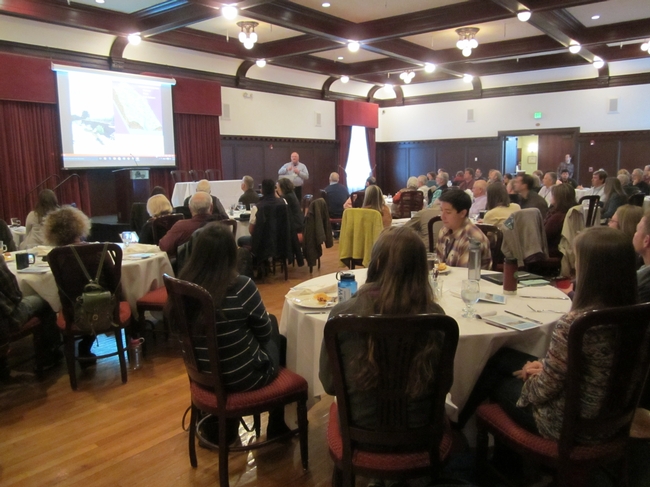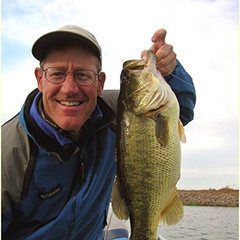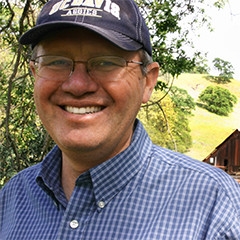
There were several University of California speakers at the Symposium, including Royce Larsen, Natural Resource Watershed Advisor with UCCE, who gave a great overview of the agricultural and ecological importance of the Salinas River Watershed. I will focus on two presentations that may be of particular interest to livestock producers. Dr. Rob Atwill, with the UC Davis School of Veterinary Medicine and Dr. Ken Tate, Rangeland Watershed Specialist with UCCE spoke about their rangeland water quality research.


Dr. Tate described the California Rangeland Watershed Program which was developed 25 years ago. This was a collaborative partnership between ranchers, the University of California (UC), Resource Conservation Districts (RCD), the Natural Resources Conservation Service (NRCS), the Reginal Water Quality Control Boards (RWQCB), and many others. The goal was to implement management practices that would increase livestock production and improve water quality at the same time. Ranchers have been quite active in doing projects to improve water quality. Between 2009 and 2014, NRCS had 7,385 contracts with ranchers for rangeland water quality projects. NRCS spent $302 million, with ranchers providing the same amount either in cash, materials, or labor. These projects covered 5.7 million acres of California rangeland. During this time UC researchers found that more than 90% of pathogens are retained in the cow pat or within 1 foot of the cow pat. An additional 70-99% of pathogens are trapped within 1 yard of the cow pat. They also found that more than 60% of cow pats end up near livestock attractants in the summer, so to reduce the possibility of pathogens entering waterways we can do things like strategically place salt, feed, water, or other cattle attractants away from streams or runoff areas.
Livestock producers have done many things improve both production and water quality like grazing at moderate stocking rates where the stocking rate is in balance with forage production; managing livestock distribution to take advantage of areas that are underutilized; and managing wet season grazing by putting cattle on soils that are less compactable or erodible when wet. Producers also install cross fencing and off-stream drinking water, create riparian pastures, herd cattle away from sensitive areas, and maintain vegetated buffer strips adjacent to waterways.
The Regional Water Quality Control Boards are looking at rangeland water quality again, so now is a good time for ranchers, UC, NRCS, and others to rekindle those partnerships from 25 years ago to help guide the future of rangeland water quality regulations.
Click here for information about other Symposium presentations, to get involved with the Salinas River Watershed planning effort or to learn more about Ecologictics.
Author - San Benito County Director and Area Livestock and Natural Resources Advisor